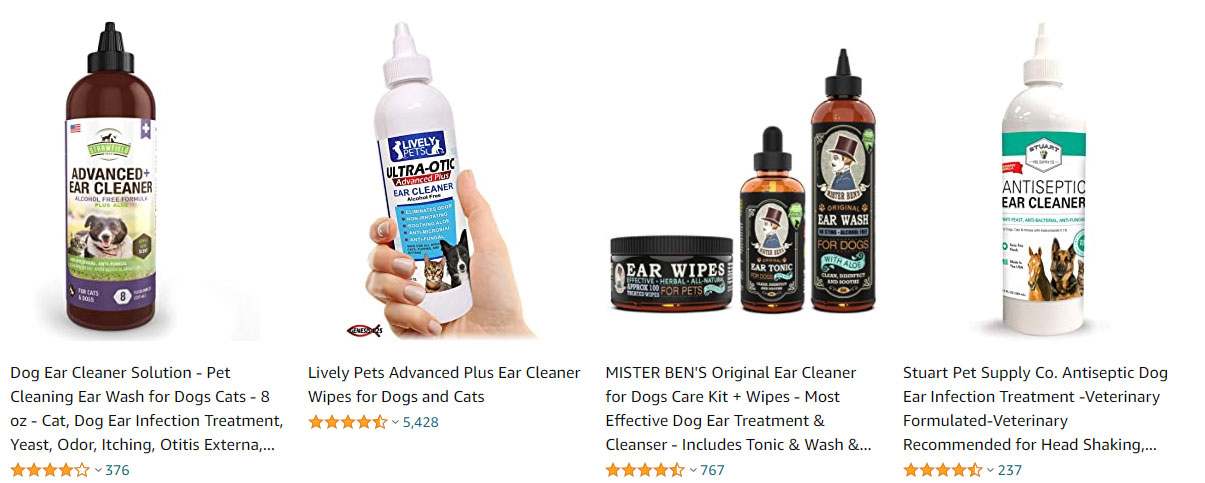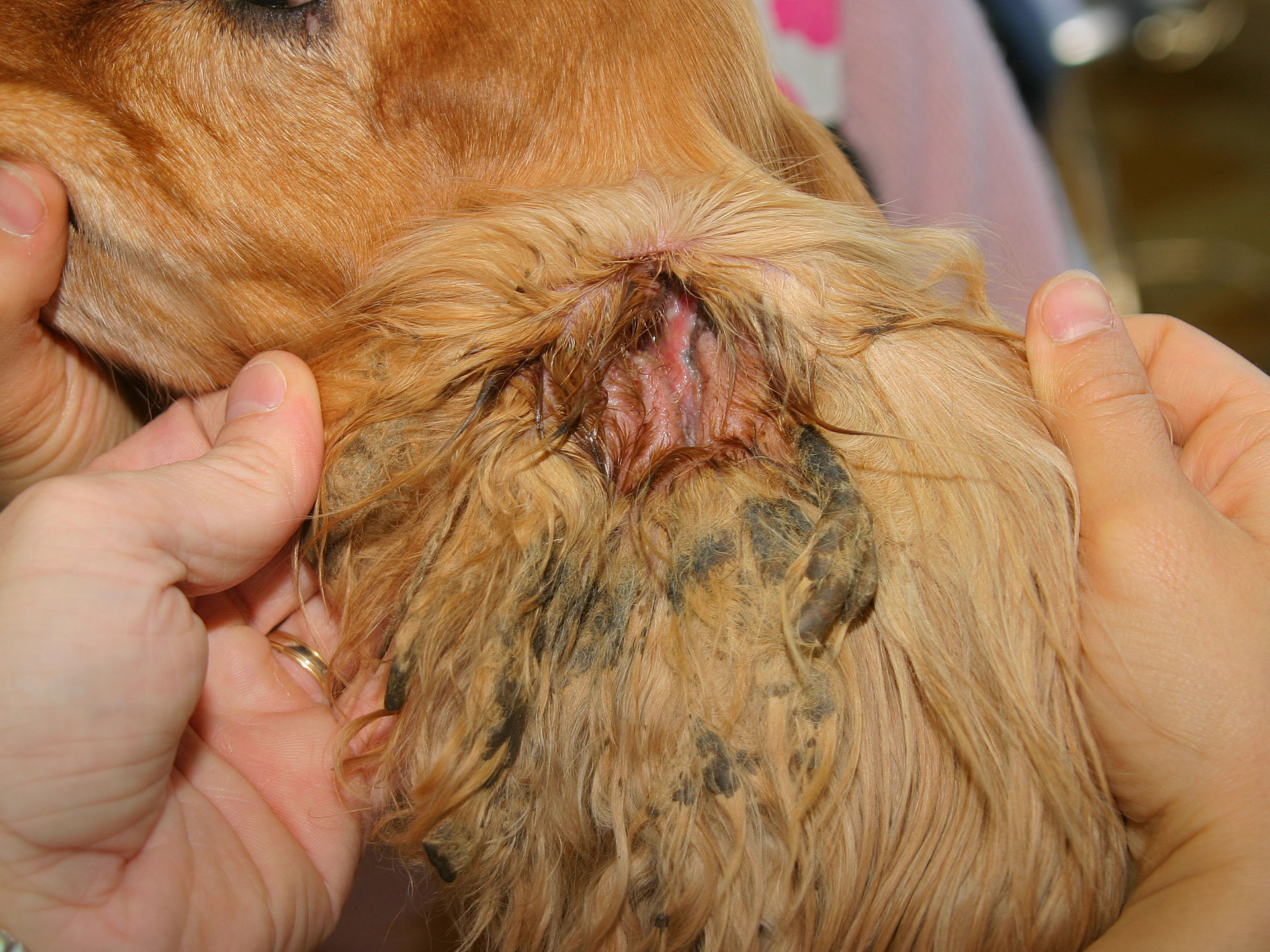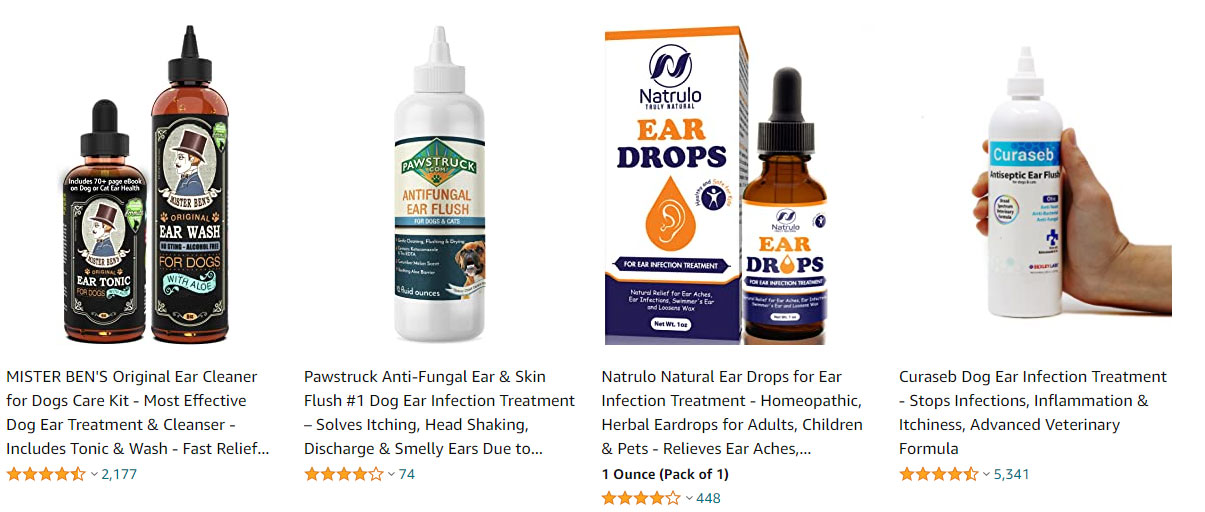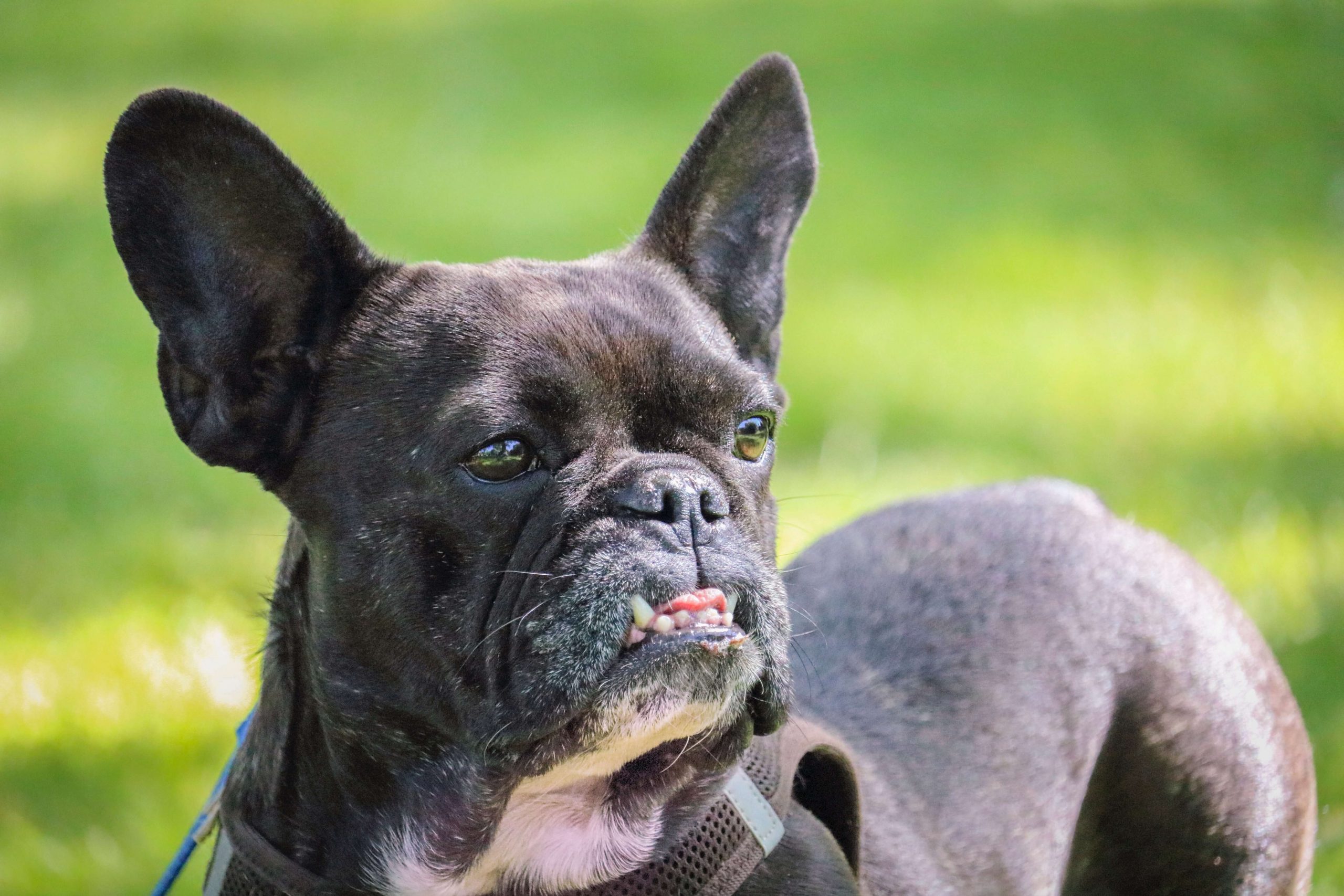Otitis in dogs
In this article, we will try to understand the process of an otitis in dogs, an infection that can affect your dog's health in many ways. To do this, we will first study the anatomy of the dog's ear, and then the causes, symptoms and consequences of an otitis.
We will look at how an ear infection is diagnosed and how best to treat it, and we will see that it is possible to reduce the risk of an ear infection by taking simple steps.
What is canine ear infection?
In order to understand ear infections in dogs, we will first study their anatomy. The dog's ear is quite different from the human ear. Their ear canal is bent (it is L-shaped). It is divided into three main parts: the external part (the pinna) which is visible to the naked eye, the middle part and the internal part visible with an otoscope.
When an inflammation or an infection appears in one or several of these three parts, we speak about an otitis which can be more or less serious.
What are the potential causes?
Dogs are much more sensitive to ear infections than we are because of their specific anatomy as seen above. This one favors the accumulation of earwax at the bottom of the ears which can cause discomfort.
• Dogs with floppy ears are also more prone to ear infections because the ears have very little ventilation and lead to bacterial maceration.
• A foreign body such as a spikelet is a frequent cause, especially in summer.
• A parasite often the one responsible for ear scabies. It is important to focus on this point because it is one of the most common causes. The scabies is due to a mite called "otodectes cynotis". It is very contagious between animals but is not transmissible to humans. It is caught by direct contact or by proximity (especially in boarding houses and kennels, by contact with infested blankets or kennels). In this case, your pet will not stop scratching and a black and abundant earwax will appear.
• An allergy: yes, our "doggies" can also have allergies. It is the most frequent cause of ear infections. Allergy problems affect the skin but also the ears.
• It can also happen that dogs have tumors in the ear canal, often a surgery is necessary in this case.

What are the symptoms?
In order to best manage ear infections, it is important to recognize the signs. Different symptoms can be observed:
• Your dog's head is tilted: your dog holds his head crooked, it's a sign of discomfort.
• Your dog shakes his ears very often, tries to rub himself on everything he finds, this is also a sign of discomfort.
• You have noticed a bad smell in one or both ears, this is a sign of otitis.
• If you see blackness in his ear, this is also a sign of otitis externa, especially in the case of scabies.
How is an ear infection diagnosed?
An ear infection requires a visit to your veterinarian, but what will he or she do during this appointment?
Your veterinarian will use an otoscope to look inside your dog's ear. He will be able to determine what type of ear infection your dog has.
He can either find a foreign body such as spikelets which are very present in summer, or he can take a sample with a large cotton swab that he will insert into your dog's ear and examine it under a microscope to see if it is an otitis due to a parasite, a bacteria or a fungus. Depending on what your veterinarian finds, an appropriate treatment will be necessary.
What are the treatments? What medications?
If your pet has a bacterial or fungal ear infection, you will need to use a lotion adapted to this type of ear infection. In general, a cleaning of the ears is necessary before applying the lotion. The treatment lasts about two weeks to make sure that all the bacteria are gone. If after a few days, you do not see any improvement, call your veterinarian, it may be necessary to change the product. He will then take a sample and analyze it to make sure he has the right antibiotic.
If your pet has a foreign body in the ear, the veterinarian will remove it with a special forceps. If this manipulation is very painful, your veterinarian may offer to tranquilize your pet. After removing the foreign body, your veterinarian will ask you to put milk in it to soothe the ear.
If your pet has too much earwax, a specific product will be suggested.

What are the potential consequences?
An otitis that is not treated properly or that is caught too late can have the following consequences:
An othematoma: this problem is encountered when the dog is constantly shaking his ears. The small blood vessels burst and your dog's ear swells. In fact, it fills with blood and surgery is usually necessary.
Temporary or permanent loss of hearing: if not noticed early, otitis can eventually damage the eardrum and lead to hearing loss.
What should I do if my dog has an ear infection?
An ear infection is very painful and embarrassing for your dog. If you have any doubt about the discomfort, make an appointment with your veterinarian as soon as possible. If this problem appears on a weekend when the veterinarians are not always open, you can clean his ears with an adapted product.
It is important not to use anything other than an ear cleaner. Avoid cleaning his ears with fresh water, soap or alcohol, as these products are very irritating for the ear canal. Depending on the type of ear infection, using the wrong product could make the problem worse.
If you manage to get an appointment quickly, avoid putting any liquid in his ears, it could prevent your veterinarian to see the bottom of the ear. If your dog is very itchy, you can put a collar on him to prevent him from hurting himself.
What preventive measures can be taken to reduce the risk of ear infections in dogs?
To prevent your dog from getting ear infections, it is important to maintain them on a daily basis. You should know that not all dogs have the same needs:
- For dogs with erect ears, it is recommended to clean them once every two weeks in summer and once a month in winter.
- For dogs with floppy ears, it is recommended to clean them every week in summer and once every two weeks in winter.
In order to optimize the cleaning, it is important to have the right gestures. You have just come back from your veterinarian, so you have the ear cleaning lotion. We are now going to see the steps of the cleaning.
- Gently tilt the dog's head and insert the tip of the cleaner.
- Compress the bottle to apply 2 to 4 pressures.
- Massage the base of the ear, then release your dog and let him shake his ears, this will allow him to externalize the impurities. Once the shaking is over, take a compress and wipe the ear.
- Repeat the same process for the second ear. It is important to clean the tip of the cleaner before changing ears to avoid possible contamination.
What can we conclude from this? Once again, the saying "prevention is better than cure" makes sense. It is important when you adopt a dog to go quickly to your veterinarian so that he can give you the necessary advices to take care of your pet.
Sometimes some causes of ear infections cannot be avoided such as malformation or tumor but most of the time they are avoidable. My last piece of advice is to get your puppy used to you handling his ear as soon as possible. The care will be much easier afterwards, believe me!


